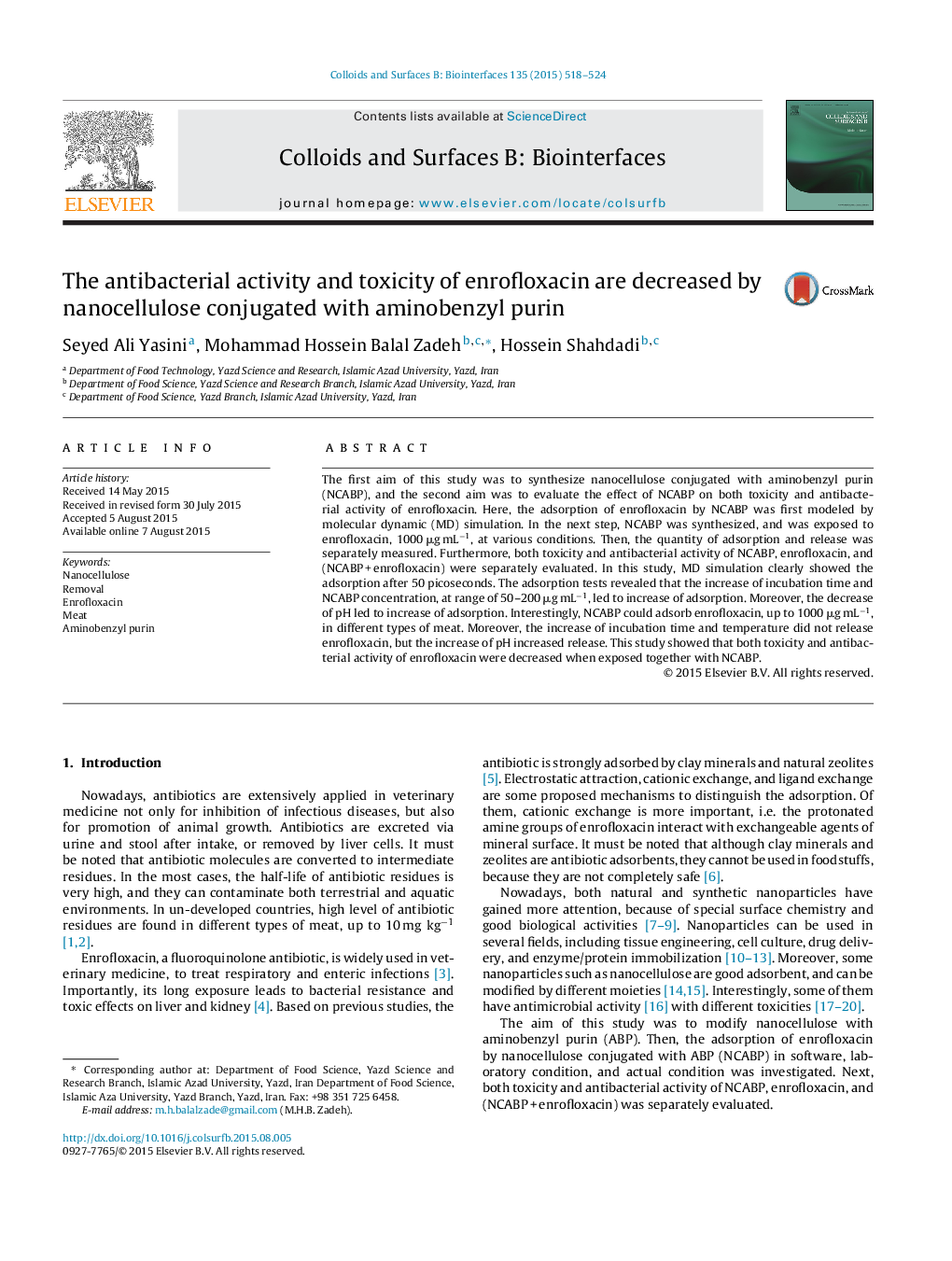| Article ID | Journal | Published Year | Pages | File Type |
|---|---|---|---|---|
| 599273 | Colloids and Surfaces B: Biointerfaces | 2015 | 7 Pages |
•MD simulation clearly showed the adsorption of enrofloxacin by NCABP.•The increase of incubation time and NCABP concentration, at range of 50–200 μg mL−1, led to increase of adsorption.•The decrease of pH led to increase of adsorption.•NCABP could adsorb enrofloxacin in different types of meat.•Both toxicity and antibacterial activity of enrofloxacin were decreased when exposed together with NCABP.
The first aim of this study was to synthesize nanocellulose conjugated with aminobenzyl purin (NCABP), and the second aim was to evaluate the effect of NCABP on both toxicity and antibacterial activity of enrofloxacin. Here, the adsorption of enrofloxacin by NCABP was first modeled by molecular dynamic (MD) simulation. In the next step, NCABP was synthesized, and was exposed to enrofloxacin, 1000 μg mL−1, at various conditions. Then, the quantity of adsorption and release was separately measured. Furthermore, both toxicity and antibacterial activity of NCABP, enrofloxacin, and (NCABP + enrofloxacin) were separately evaluated. In this study, MD simulation clearly showed the adsorption after 50 picoseconds. The adsorption tests revealed that the increase of incubation time and NCABP concentration, at range of 50–200 μg mL−1, led to increase of adsorption. Moreover, the decrease of pH led to increase of adsorption. Interestingly, NCABP could adsorb enrofloxacin, up to 1000 μg mL−1, in different types of meat. Moreover, the increase of incubation time and temperature did not release enrofloxacin, but the increase of pH increased release. This study showed that both toxicity and antibacterial activity of enrofloxacin were decreased when exposed together with NCABP.
Graphical abstractFigure optionsDownload full-size imageDownload as PowerPoint slide
